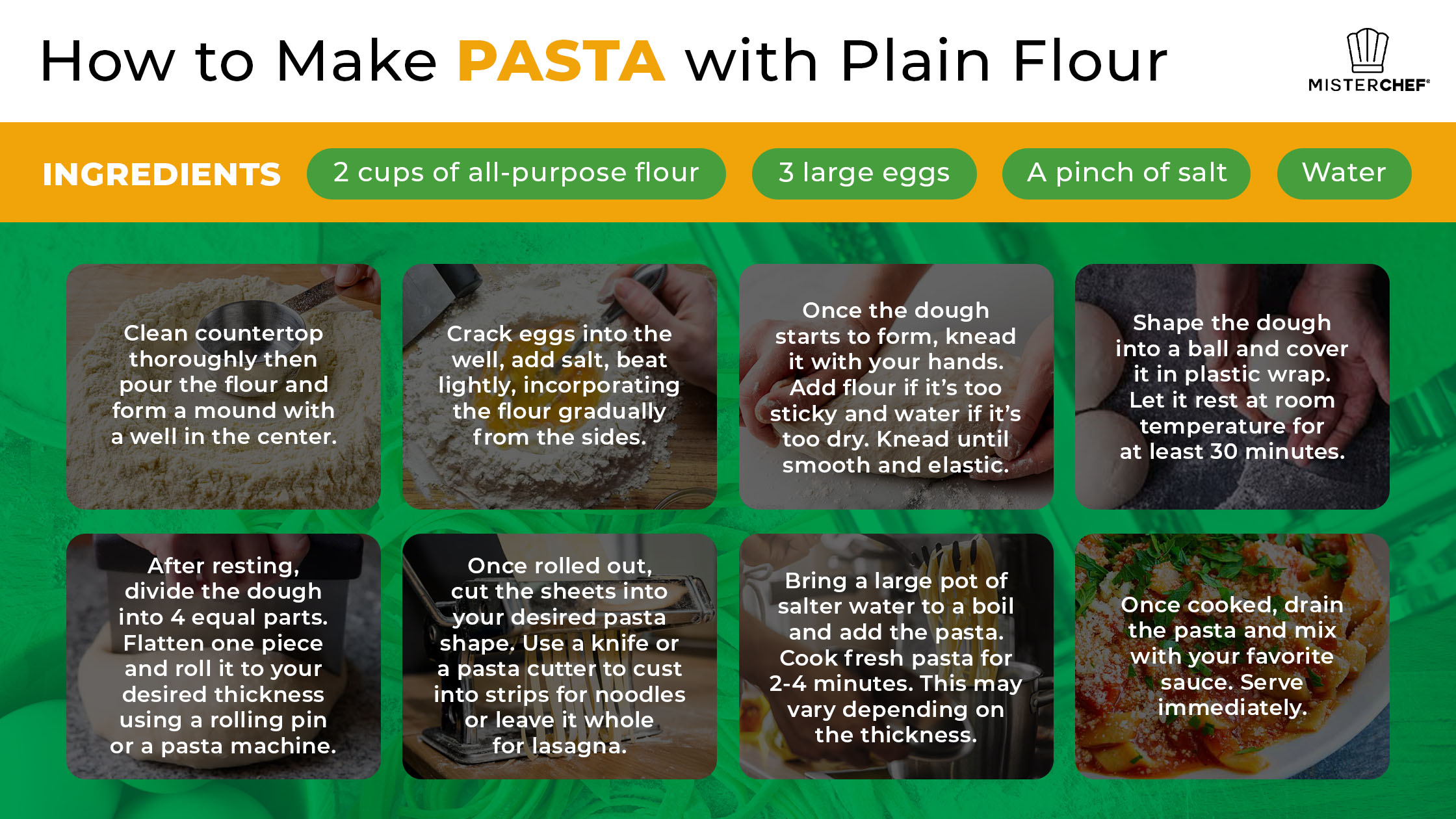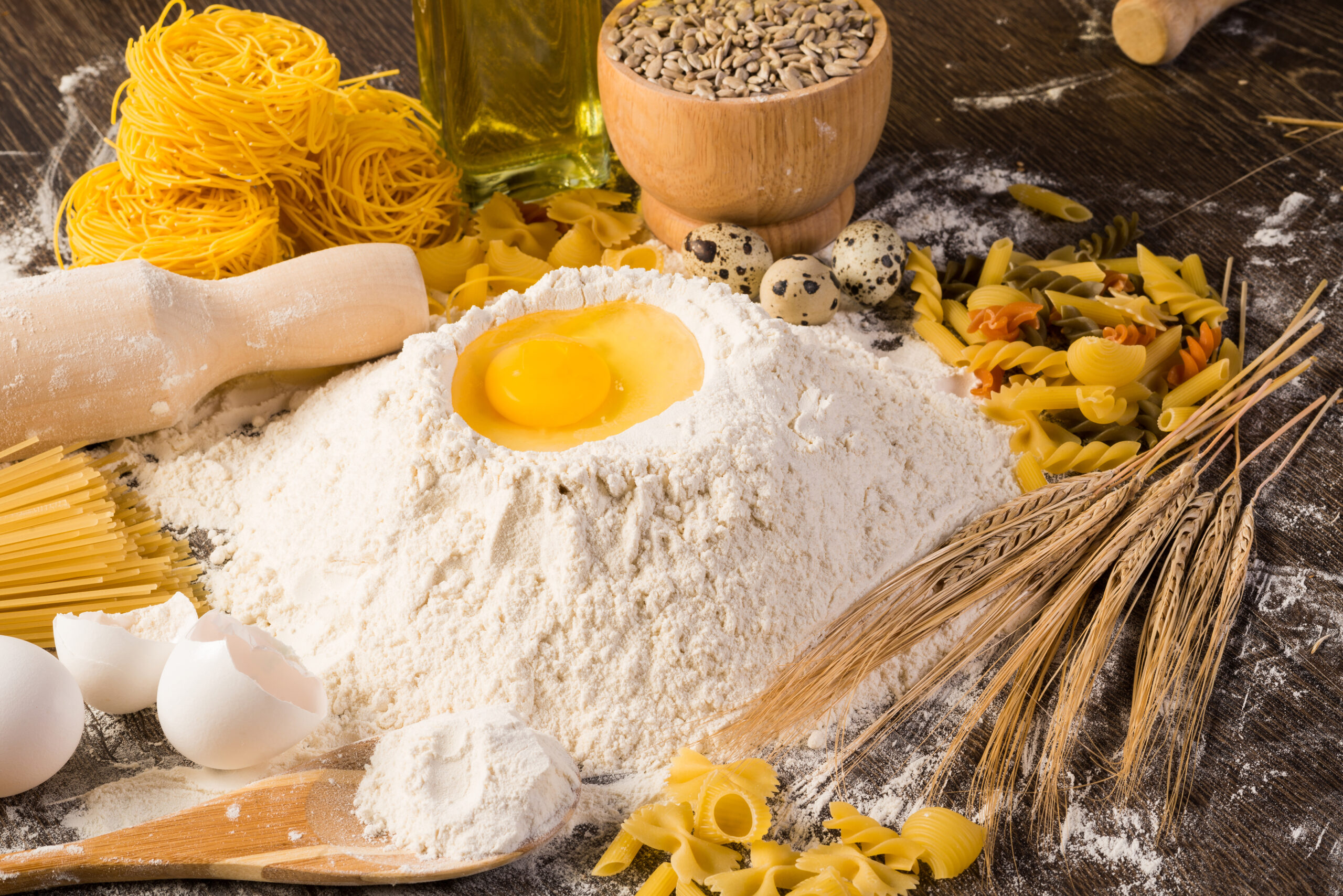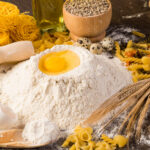Making delicious pasta at home is simple; it’s all about combining flour, eggs, and water. However, the quality of your pasta might vary greatly depending on the sort of flour you use. Semolina flour is a popular choice due to its fine texture. But what if you don’t have any on hand? Can you use plain flour? Yes and in this blog we’ll show you how.
Why Is Semolina Flour Often Used to Make Pasta?
Semolina flour is often the top choice for pasta making, and there’s a good reason for that.
Originating from durum wheat, it has a coarse texture and high gluten content. This unique combination makes it incredibly well-suited for pasta since the gluten helps the dough keeps the dough stretchy and strong, so it doesn’t break when you roll and shape it. Semolina also has a mild, earthy flavor that goes with a wide range of sauces and ingredients, making it a great choice for different pasta recipes.
Can You Make Pasta With Other Types of Flour?
Yes, you can and you have multiple options.
All-purpose flour or plain old regular flour, for instance, is a widely available option that works well. It makes the dough slightly softer and more delicate, which might be easier for beginners to work with.
Whole wheat flour is another alternative, offering a stronger flavor and higher nutritional value, though it may result in a denser pasta texture. If you’re interested in gluten-free options, you can use flours like rice, chickpea, or quinoa flour.
How to Make Pasta With Plain Flour

Here’s a simple pasta recipe for creating homemade pasta using plain flour:
Ingredients:
- 2 cups of all-purpose flour
- 3 large eggs
- A pinch of salt
- Water (as needed)
Instructions:
- Begin by cleaning your countertop thoroughly. Then, pour the all-purpose flour onto the countertop, forming a mound. Make a well in the center large enough to hold the eggs.
- Crack the eggs into the well. Add a pinch of salt. With a fork, beat the eggs lightly, incorporating the flour gradually from the well’s sides. Continue until the egg mixture becomes thick.
- Once the dough starts to form, use your hands to knead it. If the dough is too sticky, add a little more flour. If it’s too dry, add a teaspoon of water at a time until you achieve the right consistency. Knead for about 8-10 minutes, or until the dough is smooth and elastic.
- Shape the dough into a ball and cover it in plastic wrap. Let the dough rest at room temperature for at least 30 minutes.
- After the fresh egg pasta dough has rested, divide it into four equal parts. Work with one part at a time, keeping the others covered to prevent them from drying out. Flatten the piece of dough with your hands and then roll it out using a rolling pin or a pasta machine to your desired thickness. Aim for a thin pasta sheet, as it will slightly swell when cooked.
- Once rolled out, you can cut the sheets into your desired pasta shape. For noodles, you can use a knife or a pasta cutter to make strips. Alternatively, you can leave the pasta sheets whole for lasagna or cut them into squares for ravioli.
- Bring a large pot of salted water to a boil and add the pasta. Cook fresh pasta for 2-4 minutes. This may vary depending on the thickness
- Once cooked, drain the pasta and mix it with your favorite sauce and olive oil. Serve immediately.
What Is “00” Flour and Can You Use It To Make Pasta?

“00” flour is a type of wheat flour known for its super fine texture. It’s classified based on how finely it is ground, with “00” being the finest grade available. But can you make pasta with it? Absolutely. In fact, “00” flour is highly recommended for making authentic Italian pasta. Because it’s so fine, you can roll the pasta dough really thin without it ripping. It’s ideal for making delicate shapes like tortellini or for achieving the perfect texture in flat pastas like tagliatelle.
What’s the Difference Between Plain and 00 Flour?
The main difference between “00” flour and all-purpose flour lies in their texture and how they’re used. “00” flour is milled to a much finer texture compared to all-purpose flour. This fine milling gives “00” flour a silky feel, which is ideal for making smooth, elastic doughs for pasta and pizza. All-purpose flour, on the other hand, has a coarser texture and is designed to be versatile. It’s suitable for a wide range of baking and cooking needs, from bread to cookies and sauces.
FAQs
How long does homemade pasta last?
Fresh, uncooked pasta can be stored in the refrigerator for up to 2 days. For longer storage, consider freezing it. Frozen pasta can last for up to 3 months. Cooked pasta should be consumed within 3-5 days when stored in the refrigerator.
Can I make pasta without eggs?
Yes, you can make eggless pasta using just flour and water. This results in a slightly different texture but is a great vegan alternative.
How do I prevent my pasta from sticking together after cutting?
Dust the fresh homemade pasta lightly with flour before cutting it, and make sure to separate the strands or shapes as you cut. You can also hang long strands over a clean dowel or the back of a chair to dry slightly before cooking.
Is it possible to add flavorings to pasta dough?
Absolutely! You can incorporate herbs, spices, vegetable purees (like spinach or beet), and even squid ink into your dough for added color and flavor.
How much water do I need to cook pasta?
Use a large pot with about 4 quarts (3.8 liters) of water for every 1 pound (450 grams) of pasta.
Summary
Making homemade fresh pasta dough is simple, whether you’re using semolina, all-purpose flour, or other flour alternatives like “00” flour. Semolina flour is traditionally preferred for its texture and flavor, but all-purpose flour and “00” flour are great substitutes that can yield just as delicious results.
Ready to improve your pasta-making game? Try the MisterChef Pasta Maker! This versatile tool simplifies the pasta-making process, allowing you to easily roll out dough and cut it into perfect shapes. Shop with us today.







